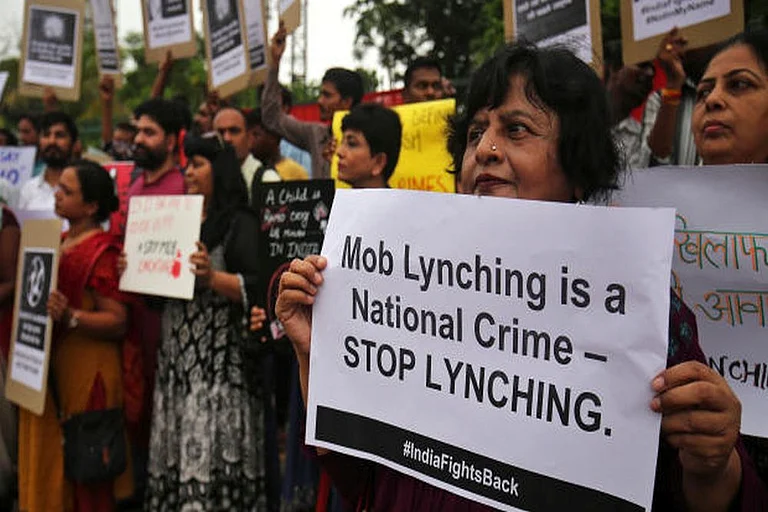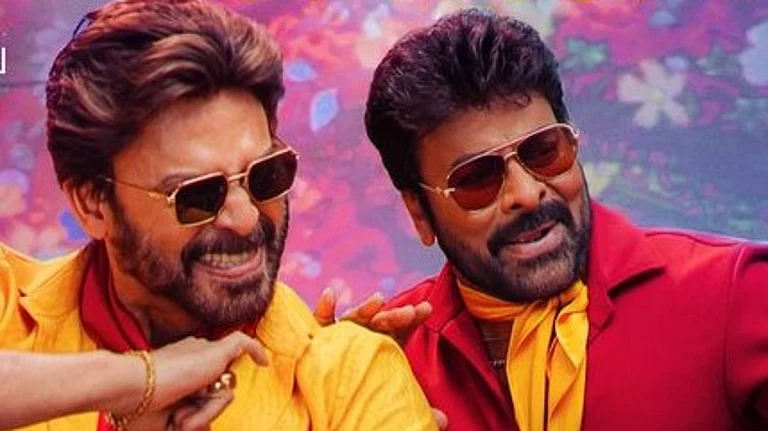The three main political parties of Karnataka claimed all along that they would win a majority on their own. The Congress, the only party among these with a grassroots presence across the entire state, seemed though the best positioned to do so since the ruling BJP was up against massive anti-incumbency and the JD(S) influence was limited to the old Mysore region and a few areas scattered outside. Even when most exit polls affirmed a clear majority for the Congress, its party leaders held on—in private conversations—to the possibility of a hung assembly. The big scale of the Congress victory over the weekend—it won 43% of the total votes—was truly a surprise.
Many factors added up to fetch 135 seats out of the total 224 assembly seats for the Congress. Its organisational roots got revived after D K Shivakumar took over as its state party president in mid-2020, following the collapse of the Congress-JD(S) coalition government. He made steady efforts to shore up his party’s grassroots strength and firm up its internal communication strategies across Karnataka. Hopeful about their party having a real chance at forming the government the next time, the party workers kept up their criticisms of the various failings of the ruling BJP government. The state Congress’ social media team aided them in this regard through a constant supply of logical and factual counters to the various claims of the BJP. Its efforts were amplified by those of the social media team appointed by the Delhi unit of the Congress party a year ago and the media teams formed by individual Congress leaders.
A third factor in the Congress victory was the poll promises aimed at the crucial constituencies of poor, women and youth voters—200 units of free electricity per month, Rs 2,000 monthly stipend for women headed poor households and Rs 3,000 allowance for unemployed graduates for a two-year period, among others. And these promises were taken to the electorate in the form of ‘guarantee cards’ a couple of months before the elections. Importantly, the Congress campaign kept the focus on the local issues that had brought about anti-incumbency, that is, corruption, price rise and unemployment, and avoided staging a Rahul Gandhi versus Modi contest.
The factionalism within the Congress party around the figures of Siddaramaiah and D.K. Shivakumar was well known, but it never erupted to spoil the Congress campaign that kept projecting a co-operative spirit between them the entire time. Keeping up the show of unity, short videos of the two having an informal chat and of them pledging to implement their manifesto promises at a Chamundeshwari temple in Mysore were released on the eve of the election day.

Apart from these factors, a couple of unexpected ones helped the Congress campaign immensely. Angry at the BJP government for not granting their wish to qualify for the 15 per cent sub-quota of the OBC reservations, large sections of the Panchamasalis, a Lingayat sub-caste that makes up more than a third of that community, threw themselves behind the Congress this time. The BJP’s removal of the Lingayat leader, BS Yeddiurappa, mid-way through his CM tenure and its denial of tickets to its Lingayat leaders like Lakshman Savadi and Jagadish Shettar, who then contested from the Congress, indeed alienated big sections of the Lingayat community from the BJP and let the Congress gain significantly in North Karnataka. It had won 38 seats from this region last time but won 59 seats this time. The Congress’ win in 15 out of the 16 Scheduled Tribe reserved constituencies, where the Lingayats are electorally decisive, is also illustrative.
DK Shivakumar’s grassroots strategising in the old Mysore region helped shift a sizable portion of the Vokkaliga vote away from the JD(S) towards the Congress, which gained 12 more seats in this region this time. Making up 15 per cent of the state’s population, the Muslim communities, which usually supported the Congress and the JD (S), voted for the former in bigger numbers (around 70 per cent) this time. Finally, the BJP government’s decision to implement the internal reservations for Dalits consolidated the right-hand Dalits and the touchable Dalits, whose share of the quota was now reduced, behind the Congress, which explains the better performance of Congress in the Scheduled Caste reserved constituencies—it won 21 of the 36 of these seats, four more than last time.
Siddaramaiah, a mass leader, helped draw the support of backward castes and religious minorities in most parts of Karnataka. And, Mallikarjun Kharge, the AICC President and senior Congress leader from Karnataka, also drew the support of Dalit voters. As a result of the efforts of these key Congress leaders, every major community that influences elections in the state voted for Congress in larger numbers than before with the party performing better across rural as well as urban areas.
What About the BJP?
The BJP performed well in the coastal districts and in the urban areas of Bengaluru and Hubli, where a bulk of the voters do prefer the party for its Hindutva ideology. However, the voter desertion of sections of different communities from the BJP, which explains its diminished electoral status today, clearly conveys that its political presence in Karnataka was mainly due to the caste coalition it had pulled off, and not Hindutva.
In warding off the anti-incumbency, the BJP sought to turn the tables on the Congress by accusing it to be a corrupt party and also stoking communal tensions by removing the 4 per cent reservation for Muslims and dividing it between the Lingayats and Vokkaligas. But neither of them clicked. The BJP’s election manifesto promises to implement the Uniform Civil Code and the Citizenship Amendment Act in Karnataka found little local traction. The absence of a coherent election narrative also showed in PM Modi’s speeches in the last phase of the campaign which flit from one issue to another without making any electoral issue stick in the public imagination. A prominent part of the BJP’s campaign ads and speeches, the benefits of ‘a double engine sarkar’ didn’t acquire much appeal. Further, the BJP’s denial of tickets to fifteen sitting MLAs, many of them senior party leaders, and the overall lack of campaign focus left its grassroots workers downbeat.
The BJP government’s decision to reduce the previous government’s free 10 kg rice quota for BPL families to 5 kgs, the steep rise in petrol and gas cylinder prices and the high corruption in government offices, among others, cost it dearly, with 14 of its 28 ministers losing the elections and its final seat tally standing at 66, 38 seats fewer than last time.
What Didn’t Work for the JD(S)?
The JD(S), which appeared confident of at least retaining its 37 seats in the Assembly, ended up with 19 seats. Both Vokkaliga and Muslim voters in the old Mysore region, who form the traditional support base of the JD(S), voted the Congress in bigger numbers in these elections—the former was drawn to the prospect of DK Shivakumar, a Vokkaliga leader, becoming the Chief Minister and the latter trusted the Congress more to secure their well-being. Besides, the crossing over of several JD(S) local leaders to the Congress and the BJP and the lack of adequate financial resources also hurt it electorally.
Begun late last October with a five-point manifesto that promised high quality hospitals and schools in rural areas and offered loan waivers and financial support for small farmers, among other poll promises, the JD(S)’s election campaign peaked, it appears in retrospect, a bit too early. Besides, a high confidence about doing well in areas where it had won by large margins in the previous election also made HD Kumaraswamy rely heavily on the election rallies, Pancharatna Yatras, including taking it outside the Vokkaliga belt of the old Mysore region, to popularise the manifesto at the expense of local level strategising in the areas of its traditional stronghold. This move now appears to have been unwise since the aggressive campaigns of both the Congress and the BJP ate into the JD(S) vote share heavily in the old Mysore region, reducing it by 9.4 per cent, from 34.78 per cent to 24.38 per cent.

With the BJP increasing its footprint in the old Mysore region at the expense of the JD(S), does a bipolar situation with a direct Congress versus BJP contest across the state seem imminent? The JD(S) continues to be in the second spot in old Mysore and has won several seats outside this region this time. But a future for the party is contingent on several factors: the evolution of trust and better co-ordination among the members of the Deve Gowda family, the building of a broad-based second rung leadership and shoring up its grassroots presence and the crafting of a substantive self-identity as a secular regional party.
In the event the JD(S) forms an alliance with the BJP and moves into the NDA, the NDA can expect to gain more seats in Karnataka. In the interests of putting up the best fight as an opposition party at the centre, it will of course behoove the Congress to keep the space for forming strategic ties with the JD(S).
Two details of a psychological nature stand out after the election results. First, the election results have shaken off the sense of invincibility with which the state BJP conducted its election campaigns. Second, the tight hold of the BJP on the Lingayat community has come unstuck. According to the Lokniti survey, 29 per cent of the Lingayats voted for the Congress this time. How the Congress sustains and builds on the renewed support of this community will have a decided impact on the electoral future of the BJP.
Might the Congress’s win in Karnataka hold lessons for its election campaigns in Telangana, Rajasthan and Chhattisgarh later this year? While a stable social media campaign, the effective communication of its poll promises, the containment of party factionalism, the local rootedness of its campaign focus, among others, are likely to prove helpful elsewhere as well, state-specific strategies will be needed alongside, since the Congress is the ruling government in two of those states with possible anti-incumbency to navigate.
A morale booster for the Congress across the country, its victory in Karnataka will aid in its efforts to form an opposition front for the 2024 parliamentary elections and in its capacity to negotiate with its potential coalition allies.
Following the success of a locally grounded electoral campaign in Karnataka, the Congress has emerged as a national party with clear commitments to the cultural and political autonomy of the regions making up the Indian federal polity. Its 2024 Lok Sabha campaign is obliged to embody this new normative orientation. Directing its parliamentary campaign to both national and local issues in various Indian states might give the Congress party a new moral complexion.
(Views expressed are personal)
Chandan Gowda is Ramakrishna Hegde Chair Professor, Institute for Social and Economic Change, Bengaluru

























